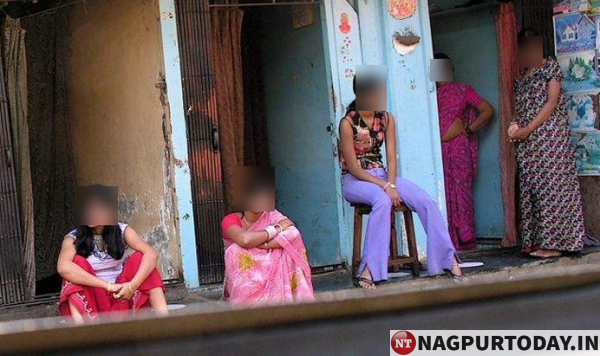Study by Academicians from Yale School of Medicine and Harvard Medical School

Nagpur: A model built by experts projects there could be 1,667 cases, 236 hospitalizations, and 56 deaths in the Itwari Chowk Red Light Area over the next one year if it reopens. The model was developed at Harvard Medical School and the Yale School of Medicine. Further, the model projects that many of these cases and deaths could be prevented by the peak of the epidemic by keeping the red light area closed.
If the Itwari Chowk red light area reopens, customers infected by sex workers can spread the infection across the city causing a surge in cases. Nagpur could face over 47 times more hospitalizations and 45 times more deaths in the first 120 days after lockdown if the red light area reopened. This could push Nagpur over peak medical capacity sooner. Fewer sick people would be able to receive treatment causing an increase in preventable deaths. More information on the health risks caused by the Nagpur red light area can be found at CodeRedCOVID.org.
Sex workers in Nagpur are trying to reopen the Itwari Chowk red light area. They are claiming to have adopted an SOP which prevents the disease spread during sex work, but this will not help. Dr. Sahayakan, a member of Code Red COVID, a global coalition of doctors and researchers that is advising governments on how to prevent COVID-19 spread stated, “None of the protection measures like distancing, masks, or sanitising can effectively stop COVID-19 transmission during sex work. Sex work cannot be safely practiced in red light areas in India given their nature. It can result in many cases and deaths in sex workers and citizens”.
Maharashtra’s red light areas will be some of the worst affected hotspots if reopened. In Pune’s Budhwar Peth, the model projects 4,795 cumulative cases, 688 hospitalizations, and 162 deaths. In Mumbai’s Kamathipura, Grant Road, and Faulkland Road Red Light Area, 3,494 cases, 486 hospitalizations, and 114 deaths.
Commenting on the report, co-author, Dr. Sudhakar Nuti, Harvard Medical School, said “The Indian government has implemented smart and effective measures to flatten the curve, but it is unlikely for the pandemic to be resolved until there is a vaccine. It is therefore important that the red light area in Nagpur remains closed until a vaccine is developed and widely distributed to protect sex workers and the population at large.” Government restrictions on this part of the informal economy have not been outlined in COVID-19 directives, but a sex worker in Mumbai was quoted in a media story stating “There will be no business in Kamathipura for at least next two years. We can only return when there’s a COVID-19 vaccine.”
The study recommends that sex workers need opportunities to gain skills that provide employment in lower-risk jobs. Recent media reports have shown that some sex workers have begun exploring alternative employment options. In Andhra Pradesh, a collective has asked for an exit strategy for sex workers including “transitional housing, bank loans, and alternate employment”. The efforts to keep Nagpur’s red light area closed and help sex workers find lower risk jobs would save many lives.
About the Study
The study ‘Modelling the Effect of Continued Closure of Red-Light Areas on COVID-19 Transmission in India’ was conducted by Abhishek Pandey, Pratha Sah, Chad Wells, Alison P. Galvani at the Center for Infectious Disease Modeling & Analysis, Yale University, Sudhakar V. Nuti at Department of Medicine, Massachusetts General Hospital and Harvard Medical School, and Jeffrey P. Townsend, Department of Biostatistics, Yale School of Public Health.












